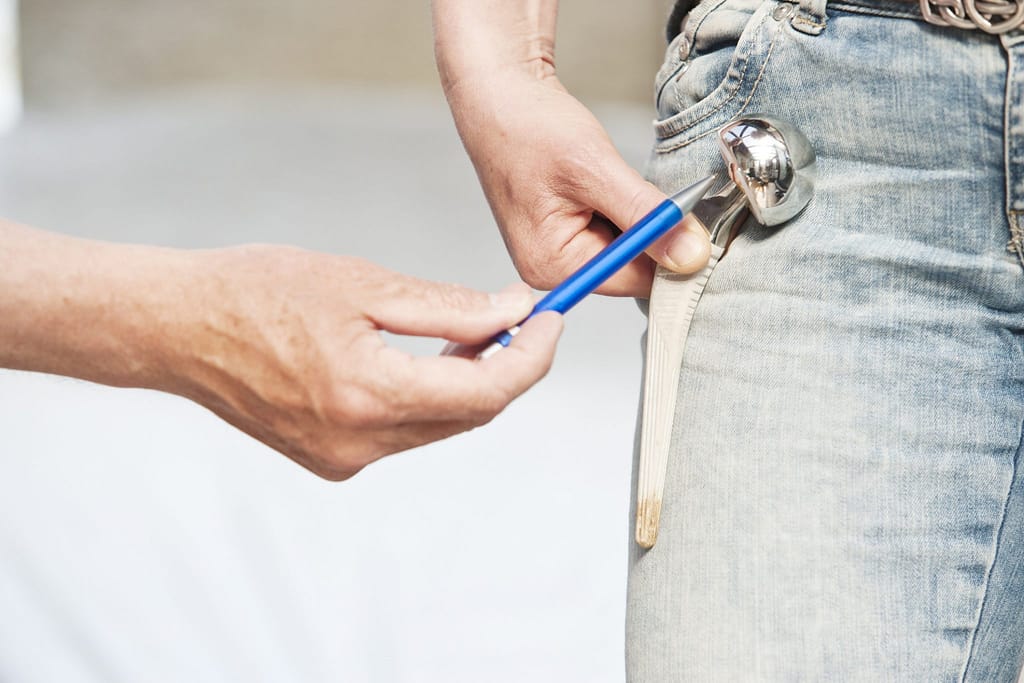Women tend to experience chronic hip pain more than men. Hip pain in women can be due to
a range of factors and, pinpointing the cause leads to effective treatment. For instance, pain in
the front hip-in the groin region could be associated with a gynecological, abdominal, or joint
condition. Pain in the side may be a side effect of a problem with the hip joint. Only when
people hit the problem right in the bull’s eye, the doctor can plan a strategic treatment course,
for effective pain relief.
This article outlines some common causes of hip pain to give a picture of what the problem
can be. Often women misinterpret pain in the upper thigh, upper buttock, or lower back pain
for hip pain, but these could be due to other reasons.
Causes of pain
When women approach a doctor with hip pain, the patient’s age is the first thing they
consider. The common reasons for hip pain would be:
Arthritis
The hip joint is a type of ball and socket joint located between the top of the femur (thigh
bone) and the socket lies in the pelvis. One of the primary causes of pain in the hip joint is
osteoarthritis. Osteoarthritis or wear-and-tear arthritis is a common age related medical that
affects the joints such as the hip. In osteoarthritis of the hip, the cartilage tissues that cushion
the ends of the ball and socket wears out over time, putting more pressure on the joint and
causes pain. Excessive wear leads to the formation of bony protrusions called osteophytes
which cause pain and stiffness in the hip joint. Traumatic arthritis also occurs due to an injury
or an accident.
Rheumatoid arthritis is another common type of arthritis that affects women and results in hip
pain. RA is four times more common in women than men. Though RA often affects the small
joints of the hand and foot, it also has some effect on large joints such as the hip and knee.
Dysplasia or impingement
Dysplasia is a condition that refers to abnormal development of the tissue or organ cells. In
hip dysplasia, the bonny tissues don’t form to the fullest to cover the ball or fit the socket.
Improper hip alignment leads to pain. Dysplasia is highly common in infants and sometimes
can be seen in adults. The most common dysplasia symptom is hip pain, which is due to
continued walking on a faulty joint. In rare cases, there will only be a small irregularity
between the ball and the socket. Though this doesn’t affect the support, the bones in the hip
might rub together and cause pain. This phenomenon is known as impingement. It is highly
common in young adults and people with extreme hip motion such as gymnasts or dancers.
Tendonitis and bursitis
Fluid-filled sacs called bursa surround most of the joints and offer to cushion the effect of
joints. There are many bursa in the hip joint and their inflammation causes excruciating pain
and stiffness on movement. Infection or disease such as rheumatoid arthritis or gout leads to
inflammation in the joint. Similar inflammation in the tough fibrous connective tissue band
that connects muscle to bone also leads to an eruption of pain. Tendonitis is a common
condition that affects people who participate in strenuous activities such as athletics,
swimming, and more. Tendinitis occurs due to iliotibial band syndrome, palpation of tissues
from the out rim of the pelvis to outside the knee.
Hernia
Femoral and inguinal hernias in the groin region can cause frontal (anterior) hip pain in
women. The femoral and inguinal hernias are often referred to as sports hernias. In an
inguinal hernia, a part of the intestine protrudes through a weak abdominal spot. Pregnant
women are prone to inguinal hernia due to excessive pressure on the abdominal wall.
Hip fractures
In old women with osteoporosis, hip fractures are common. Osteoporosis is a condition when
the body loses an excessive amount of bone or forms too little bone. Symptoms of hip
fracture are pain while people straighten, lift, or stand on their leg. Toes appearing to turn out
on the injured side are a sign that helps the doctor in preliminary diagnosis.
Gynaecological and back issues
The Gynecological system also contributes to hip pain in women. Women refer to the pain
caused during endometrial shedding as hip pain. Radiation of pain in the sciatic nerve that
runs along the lower back through the hips is identified as hip pain.
Treatment for hip pain
The treatment options for hip pain differ based on the cause of the pain. In case of pain due to
over strain, heat pack, rest, and anti-inflammatory medicines work best. Regular exercise
strengthens the hip joints and ensures proper blood circulation. A healthy diet prevents early
wear and tear, arthritis, osteoporosis, and various other causes of pain. A calcium-rich diet
strengthens the bones and protects them from stress in the long-run. In case of discomfort
during strenuous activity, stop it and seek medical help from the doctor. Excess weight can
also put pressure on the hip and aggravate the problems. Hence, keeping the weight under
control according to height can be helpful. If pain sustains, hip replacement surgery in
Turkey can be considered as it has an excellent success rate.
Bottom line
Treatments for hip pain work well only when the source of pain is diagnosed. On persistent
hip pain, visit the best doctor and get diagnosed.



